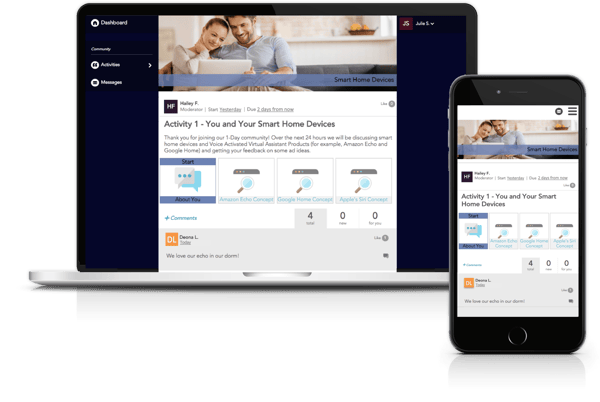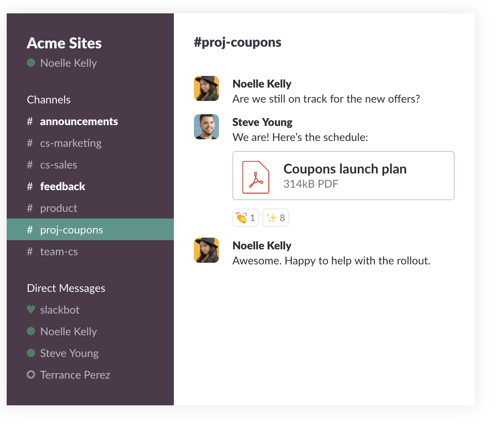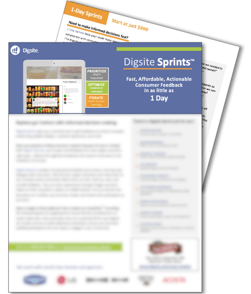Agile is the new buzzword for companies big and small that are looking to respond faster to the market with more customer-centric solutions. But agile isn’t something you hire out or buy off the shelf, it is a set of principles you tailor to your team.
There are a ton of resources out there to help you apply agile principles beyond software development to marketing, innovation and experience research. Below are some resources (books, articles, videos) that are particularly helpful for that journey.
These resources include examples from a broad array of companies including Oracle, Tesla, Ericsson, Barclays, Microsoft, Intuit, and Fidelity Investments. Some include agile metrics that will help motivate your team including speed to market, product quality and cost savings. Others focus on tools and processes for marketers, researchers and project managers looking to scale agile principals into their disciplines. There are also resources on related methods like Lean Start-Up and Design Thinking as they closely align with agile.




1. The Agile Marketer by Roland Smart
2. Agile Product Development by Tathagat Varma
3. The Age of Agile (Agile Management) by Stephen Denning
4. The Intrapreneur's Journey by Hugh Molotsi and Jeff Zias
5. Sprint: How to Solve Big Problems and Test New Ideas in Just Five Days by Jake Knapp
6. Lean vs. Agile vs. Design Thinking by Jeff Gothelf
7. Competing Against Luck (Jobs to be Done) by Clayton Christenson
8. Make Time (How to Focus on What Matters Every Day) by Jake Knapp and John Zeratsky
The Classics:




9. User Stories Applied: For Agile Software Development by Mike Cohn
10. Lean Start-up by Eric Ries
11. Change by Design by Tim Brown
12. Lean UX: Designing Great Products with Agile Teams by Jeff Gothelf and Joshua Seiden
13. Kanban: Successful Evolutionary Change for Your Technology Business by David Anderson
14. Embracing Agile
15. How to Be a Qualitative Hero
16. Get Ready to Move Faster With Agile Customer Experience Research
17. Jobs to Be Done, Context Matters
18. Be a Disrupter: How Agile Insights Teams Build Agile Research Capabilities
19. Design Sprint Example
20. The Field Guide to Human-Centered Design
21. How You Can Learn From Your Customers Using Agile Principles
22. Running a Remote Design Sprint
Agile Tools:
23. Digsite for agile research
Digsite delivers a fast, affordable way to find and engage your customers online. The platform enables you to recruit customers quickly and offers automated reporting functionality—so you can put your data to use right away. More than a survey, Digsite uses a social media style interface with a mix of moderated and unmoderated activities to get unbiased feedback and to dig deeper into understanding the context and “why’s”. The platform can be used to test products, concepts, marketing campaigns and more with a targeted group of consumers. You can gauge their reactions and iterate based on their feedback within a single study. Digsite offers a variety of activities you can use depending on what the task at hand calls for, including group and private discussions, video and photo sharing, image markup, voting and open- and closed-ended survey questions.
The platform can be used to test products, concepts, marketing campaigns and more with a targeted group of consumers. You can gauge their reactions and iterate based on their feedback within a single study. Digsite offers a variety of activities you can use depending on what the task at hand calls for, including group and private discussions, video and photo sharing, image markup, voting and open- and closed-ended survey questions.
24. Mural - for design sprint management
Google pioneered Design Sprints as an agile approach to ambiguous problems quickly. MURAL supports collaborative design by enabling users to create, modify and move virtual sticky notes in a digital team environment. Designers can jot down quick ideas on stick notes and supplement them with visual aids and other content before sharing them with their team. Teammates can then offer feedback to improve each design.
The platform allows peers to easily collaborate with one another and track changes to see how ideas evolve over time. MURAL also offers several templates that enable teams to facilitate remote design sprints from anywhere they happen to be.
25. RealtimeBoard for agile creative development
RealtimeBoard is an online whiteboarding platform that supports agile creative development for cross-functional team collaboration. Similar to Mural and Trello, the tool helps teams see their concepts through from ideation to wireframing to completion by enabling them to collaborate effectively, visualize their designs and share their ideas with ease.
.png?t=1540829815272&width=600&name=unnamed%20(3).png) [source: https://realtimeboard.com/
[source: https://realtimeboard.com/
RealtimeBoard also comes with several built-in templates that make it easy to visualize research results, including one for journey mapping. Teams that use the platform can get up and running in no time.
26. Slack for agile collaboration
Slack is an agile collaboration platform that brings remote and cross-functional teams together quickly to discuss ideas, share files, collaborate on projects and simply chat. Teams can even invite outside vendors to participate in the conversation.
The platform enables teams to organize their conversations by channel. For example, you might create a channel for each campaign and each client. That way, it’s easy to find the information you’re looking for—which saves time and frustration. Important content can also be pinned to the top of each channel so it can easily be referenced later.
 [source: https://slack.com/features]
[source: https://slack.com/features]
Slack helps employees stay in the loop without having to participate in never-ending email chains. The platform also offers emoji support and quick polls that enable you to get everyone’s input quickly.
27. Trello for sprint tracking
Trello is a collaboration platform that supports sprint tracking for marketing teams. You can use Trello to manage projects visually under the kanban framework of development.
Trello enables you to organize projects by “cards” and columns, moving them along as they get closer to completion. For example, you might create columns called “Ideas,” “To Do,” “In Progress,” “Needs Review” and “Complete.”
.png?t=1540829815272&width=2290&name=unnamed%20(1).png) [source: https://trello.com/home]
[source: https://trello.com/home]
The platform gives your team instant visibility into the status of projects and activities. Everyone can easily see where things stand at any given point in time, providing your team with complete transparency.
If you have an agile resource that you think is important to add to our list, please send it our way!
If you'd like to learn more about how you can use Digsite Sprints to get the agile insights you need, download our Digsite Sprints Fact Sheet!





.png?width=600&name=unnamed%20(2).png)




